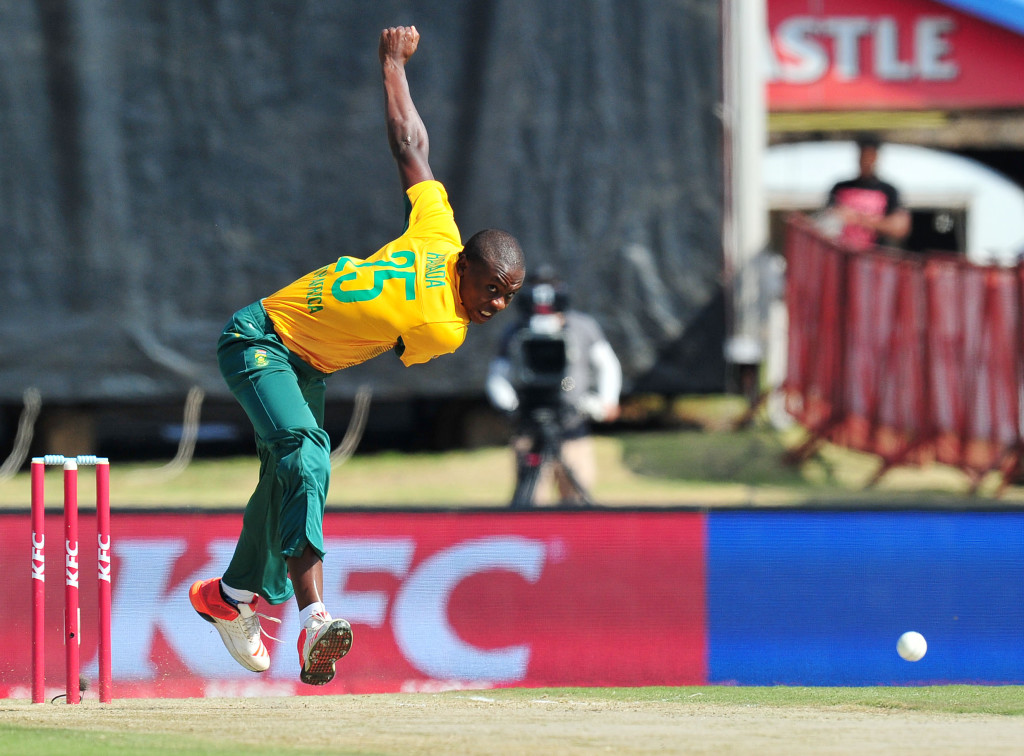There is an understandable clamour to throw the ball to Kagiso Rabada at every opportunity. The Proteas tiro hasn’t let anyone down and he’s the most promising 20-year-old cricketer on the planet.
And, as Heyneke Meyer said during the Rugby World Cup – ironically at a time when he would have selected a 38-year-old Victor Matfield to start at lock for the Springboks had he been fit – “what they [Eben Etsebeth and Lood de Jager] lose in experience they make up for in fire and heart. I always say to the youngsters, a guy like Boris Becker was at his best at 17 when he won Wimbledon. Mike Tyson was a machine at 21 and I can keep on going. Look at the best generals – Alexander the Great was 21.”
One can therefore safely assume that if Meyer was involved in cricket that Rabada would be one of the first names down on his team sheet in every format of the game, along with AB de Villiers, Faf du Plessis and Hashim Amla. And Rabada also ticks that other box, the one labelled transformation.
We are indeed dealing with a very special talent and right now Rabada must think cricket is easy. He was the stand-out performer in the Under-19 World Cup last year, taking 6 for 25 in dismantling Australia en route to winning the event.
He barged his way into the Proteas set-up for the mid-year tour to Bangladesh, even being included in the Test squad, but it was in his ODI debut where he showed what all the fuss has been about when taking a world best 6-16, including a hat-trick, in eight largely unplayable overs. The young man is growing right in front of our eyes and, as the opposition has increased in strength, he has risen to the challenge. In the victorious 3-2 ODI series victory in India, Rabada was heroic, showing a temperament that belies his age, while taking the joint most wickets, 10, including a best of 4-41.
Now, there are those rattling the gates calling for his immediate selection into Test cricket, and he’s in the squad for the upcoming series against India. If he doesn’t get match time there, then he must in the one against England at home, they say. I’m going to against the flow here and argue that the 20-year-old needs a bit more time before earning his Proteas whites.
There are a number of reasons, but the main one is that we’ve seen this movie before. Sure, there will be added pressure to select Rabada against India and England, especially given that he is black, but we have to make the decision based on what’s best for his career.
There is no hard and fast law, but in a broad general sense fast bowlers have around 10 years playing international cricket. Dale Steyn has been going for 11, while someone like Brett Lee endured nine years at the top of the Test tree. We’d like to see Rabada playing Test cricket into his early 30s and there doesn’t need to be a rush to start him out on that road, just yet.
Injuries are part and parcel of a fast bowler’s career and Rabada will pick up his as his career starts to wear and tear and while it’s a romantic notion to wish him to make his Test debut against India or England and take out the captain’s off-stump, as Steyn did when he made his debut against England in 2004, we ought to ease him into the hardest format of the game.
Besides, the fast-bowling trio of Steyn, Vernon Philander and Morne Morkel helped mould the Proteas into the best side in world cricket and at the top of their form there is no better attack in the world. Steyn, simply put, is one of Test cricket’s great fast bowlers. Philander started his own Test career, almost in Rabada-esque fashion, sprinting to 50 wickets, but the well has dried up in the past two seasons as the batsmen tend to leave him better than they did when he first appeared on the scene. The home series against England will be an opportunity for him to rediscover his mojo. And Morkel, because of his height and bounce, is a handful for any batsman on “traditionally South African tracks”.
One gets the impression that when Rabada is given the red ball for the first time then that will be “it”. He will become a fixture in the starting XIs across all formats of the game. Cricketers are playing more than they ever did and they need to be carefully managed to extend their international careers to that decade at the highest level.
There is no problem – and it’s worth encouraging – to include Rabada in the Test set-up, where he can watch and develop in the company of Steyn, Philander and Morkel. But, he has time on his side. I, for one, want to see him running in opening the Test bowling in 10 years’ time with over 300 wickets to his name. He’s a national asset and needs to be treated in that way.







